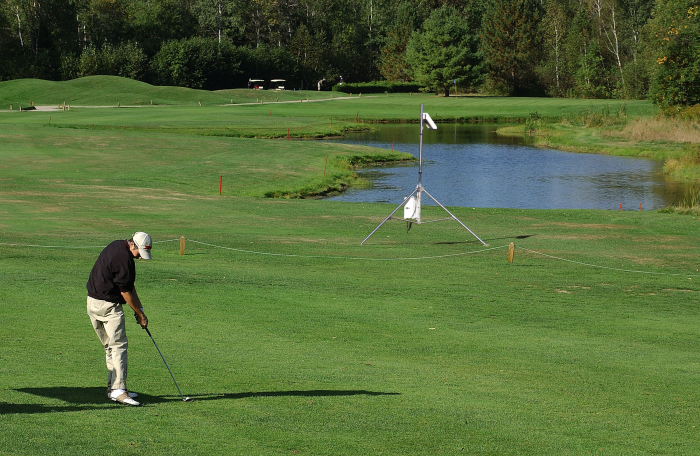




The Professional Golfers’ Association Tour (PGA Tour) of America contracted with Schneider Electric to provide hazardous weather forecasts for the Champions, Seniors, and Ladies Professional Golf Association (LPGA) golf tours, and for several other premiere golf events.
In addition to high-resolution forecasts, lightning-strike and radar data, and other data and forecasts from the Schneider Electric home office, meteorologists assigned to cover the events have Internet access to real-time radar and lightning-strike data from the National Lightning Data Network (NLDN). This information allows them to forecast the arrival time of storms moving in their direction to better schedule the events and their TV coverage. However, the meteorologists also needed to know if decaying storms or new storms building close by or overhead were electrically charged enough to be a lightning threat.
In 2006, Schneider Electric purchased six portable CS110 electric field meter systems from Campbell Scientific to measure the electric fields created by these threatening clouds. Strongly rising electric-field readings due to charged clouds within 5 to 7 miles of the sensor warn the meteorologists of the lightning threat so they can sound the alarm and clear the area of participants and spectators. These lightning prediction systems don’t rely on previous lightning strikes and thus can warn before the first strike. The need for a predictive system is illustrated by the fact that while intra-cloud lightning often develops first in a storm, in east central Florida, 23 percent of the first strikes are cloud-ground strikes.
The CS110 system the PGA Tour uses includes small, low-power radios that allow the system to be placed in good, open sites several hundred yards from the weather command center. This eliminates the need for cables to bring the data into the laptop where it is displayed. The very low-power field meter and radio allow the systems to run about three days on a 7-amp-hour motorcycle battery. A second battery is recharged while the first is in use. To accommodate the requirement to be deployed one week and be traveling to the next event the following week, the sensitive equipment is packaged in two rugged, foam-lined Pelican Storm cases and the tripod is transported via golf cart. Prewired connectors and quick-mount brackets allow the system to be deployed in less than half an hour.
Schneider Electric has since purchased five additional systems to accommodate a growing demand for this service. The CS110 has since been packaged into the LW110 lightning warning system for long-term use at a golf course, school, or park.
Case Study Summary
Application
Lightning warning for professional golf eventsLocation
Various locations, USAProducts Used
CS110 CR1000Contributors
Alan Hinckley, Campbell ScientificWade Stettner, Schneider Electric